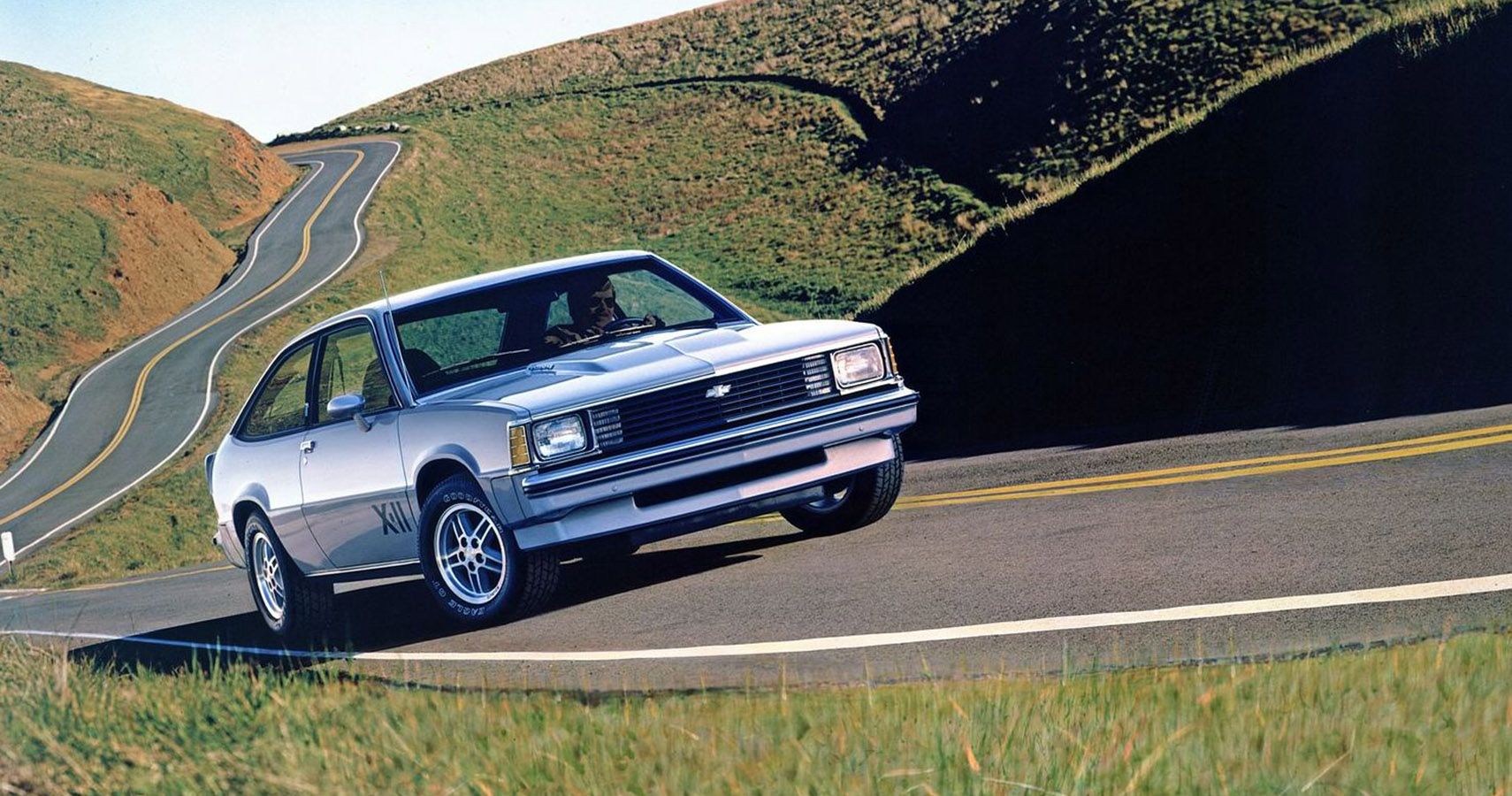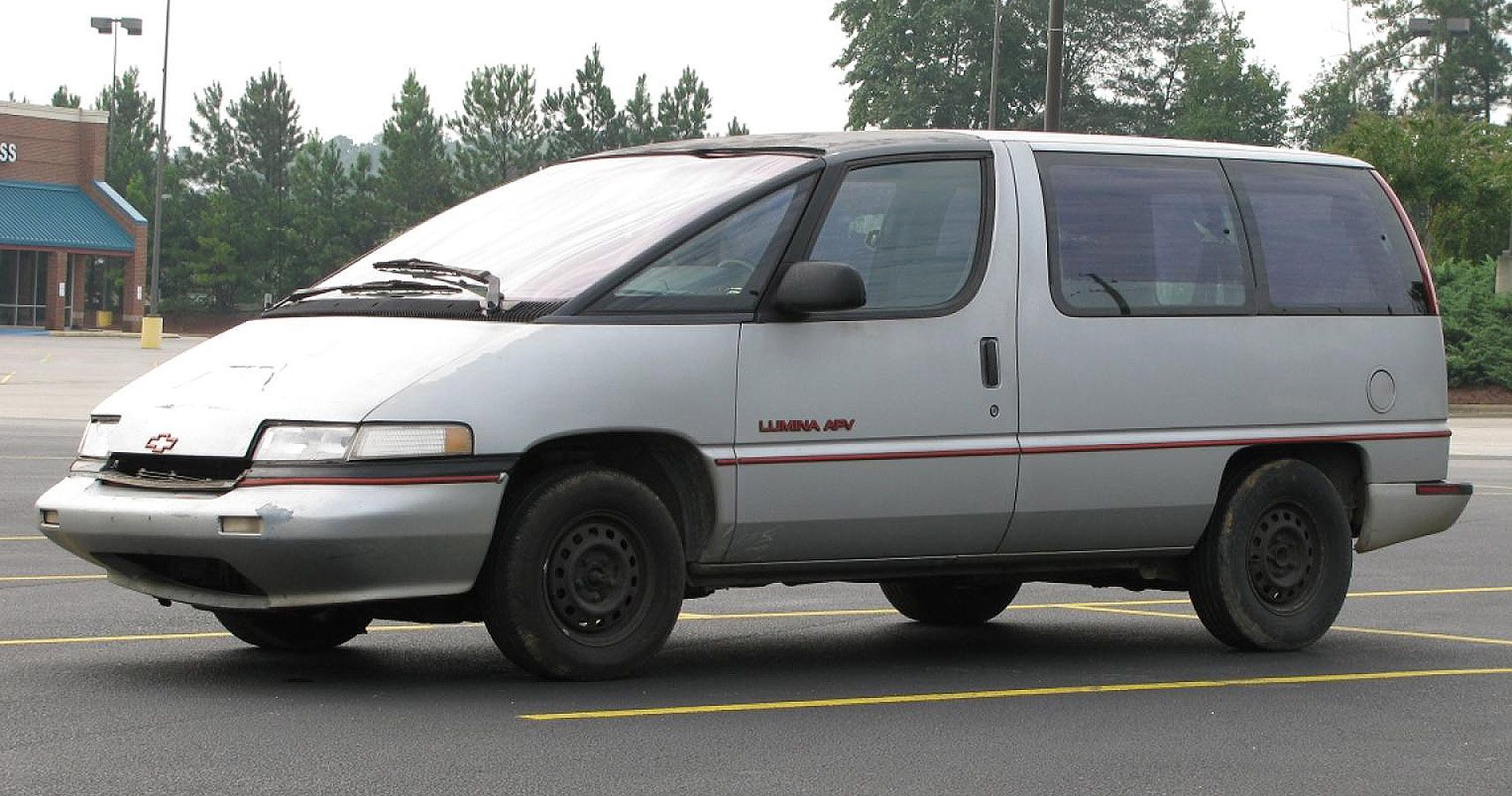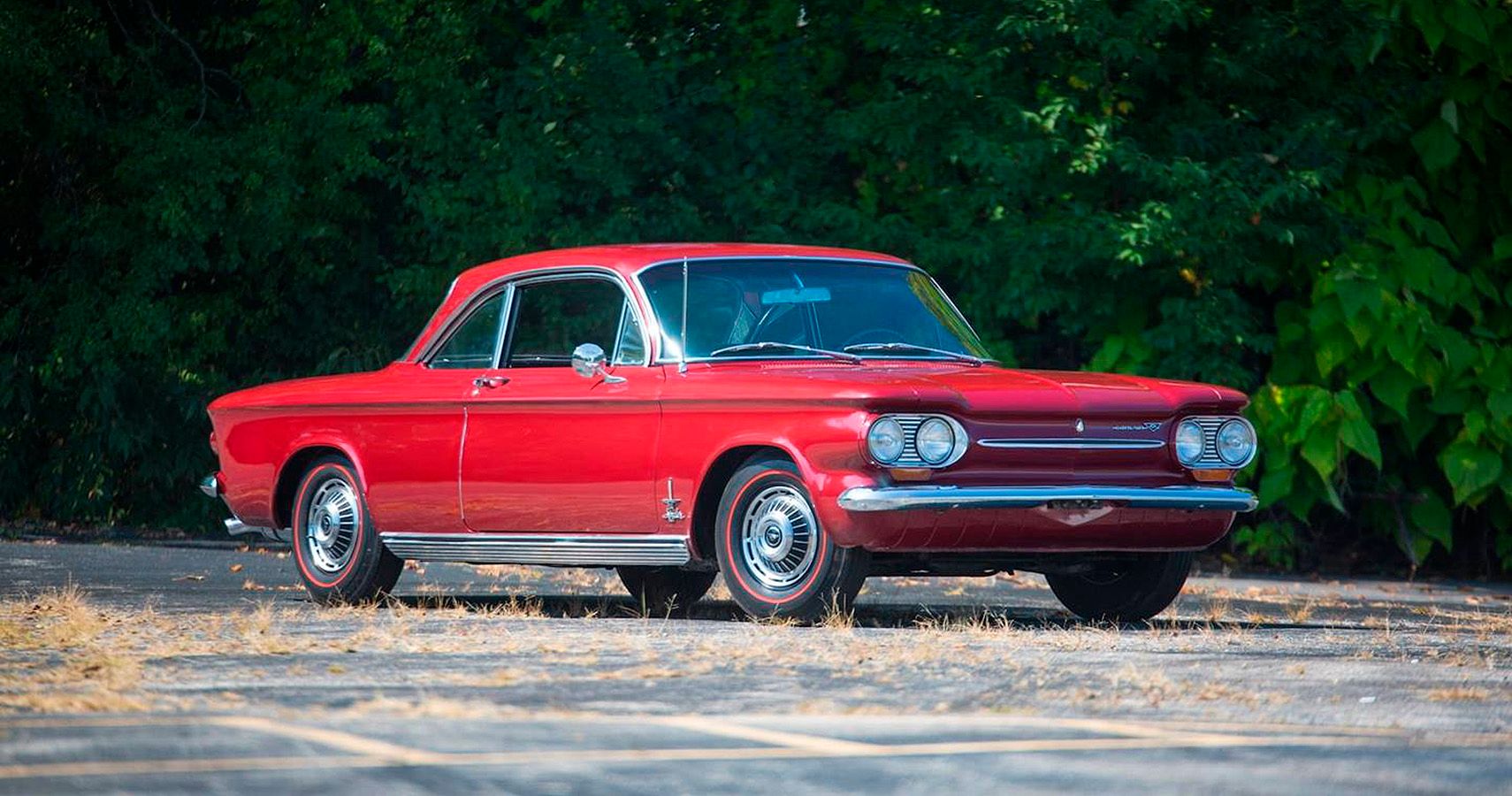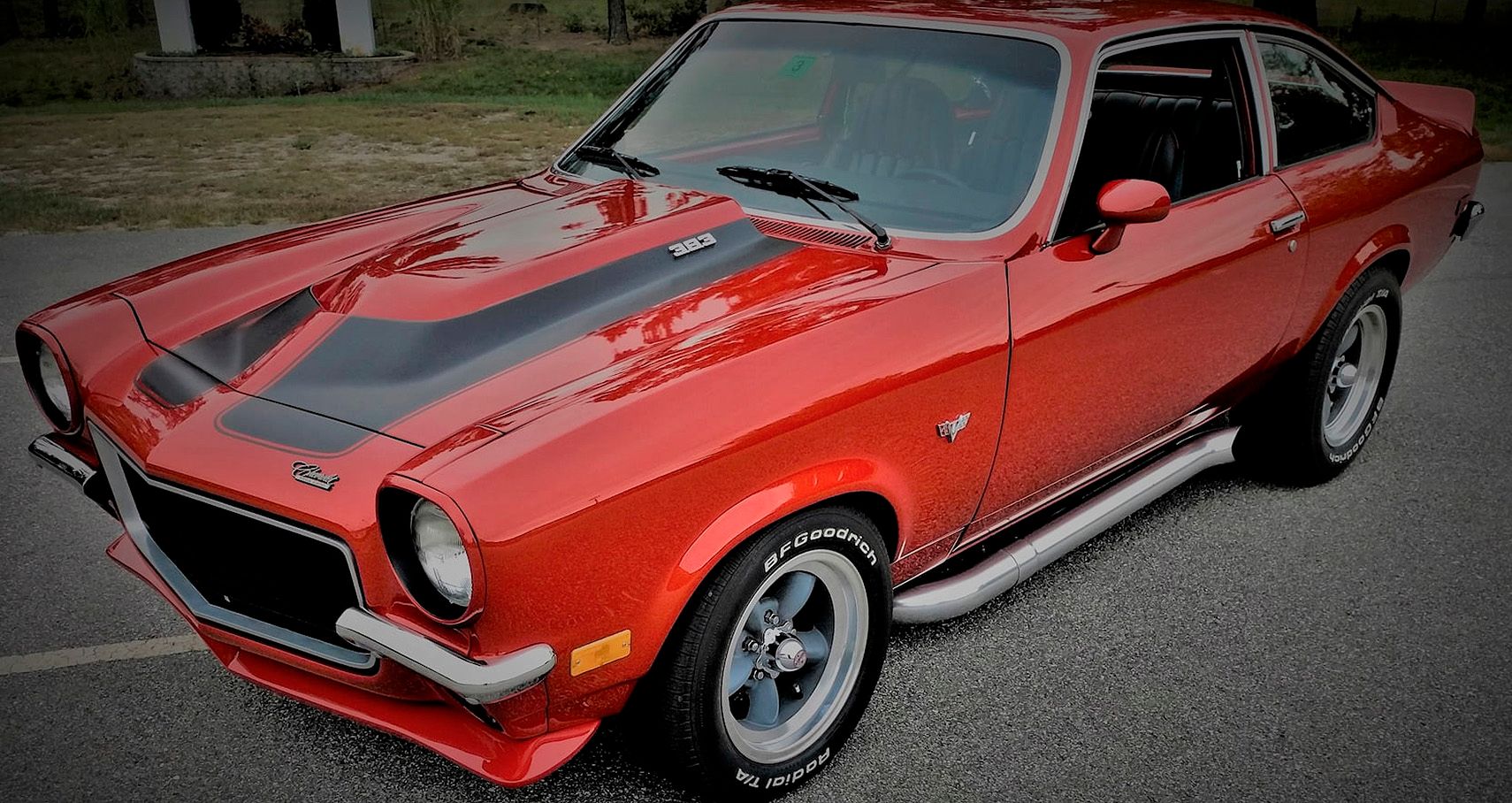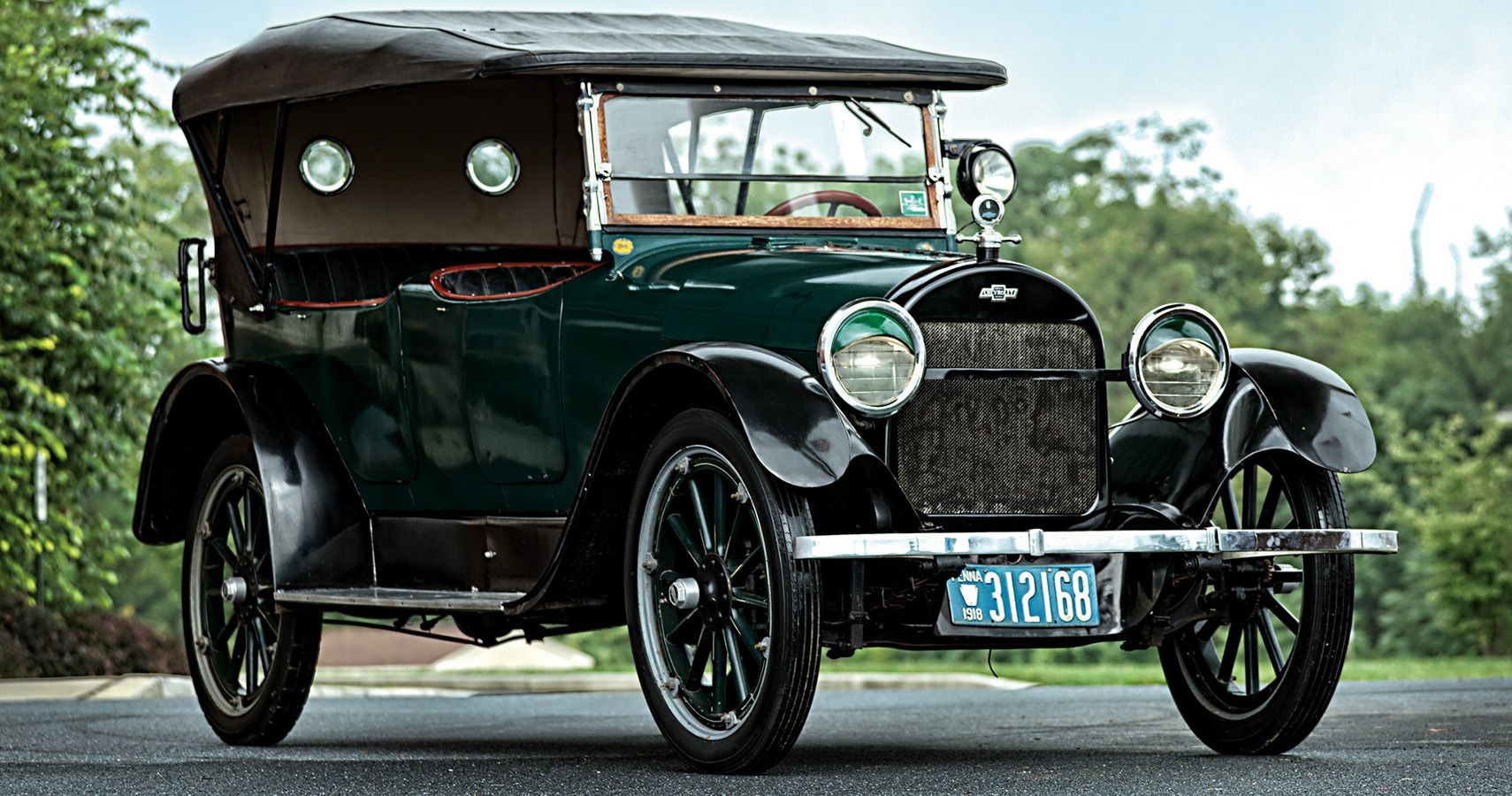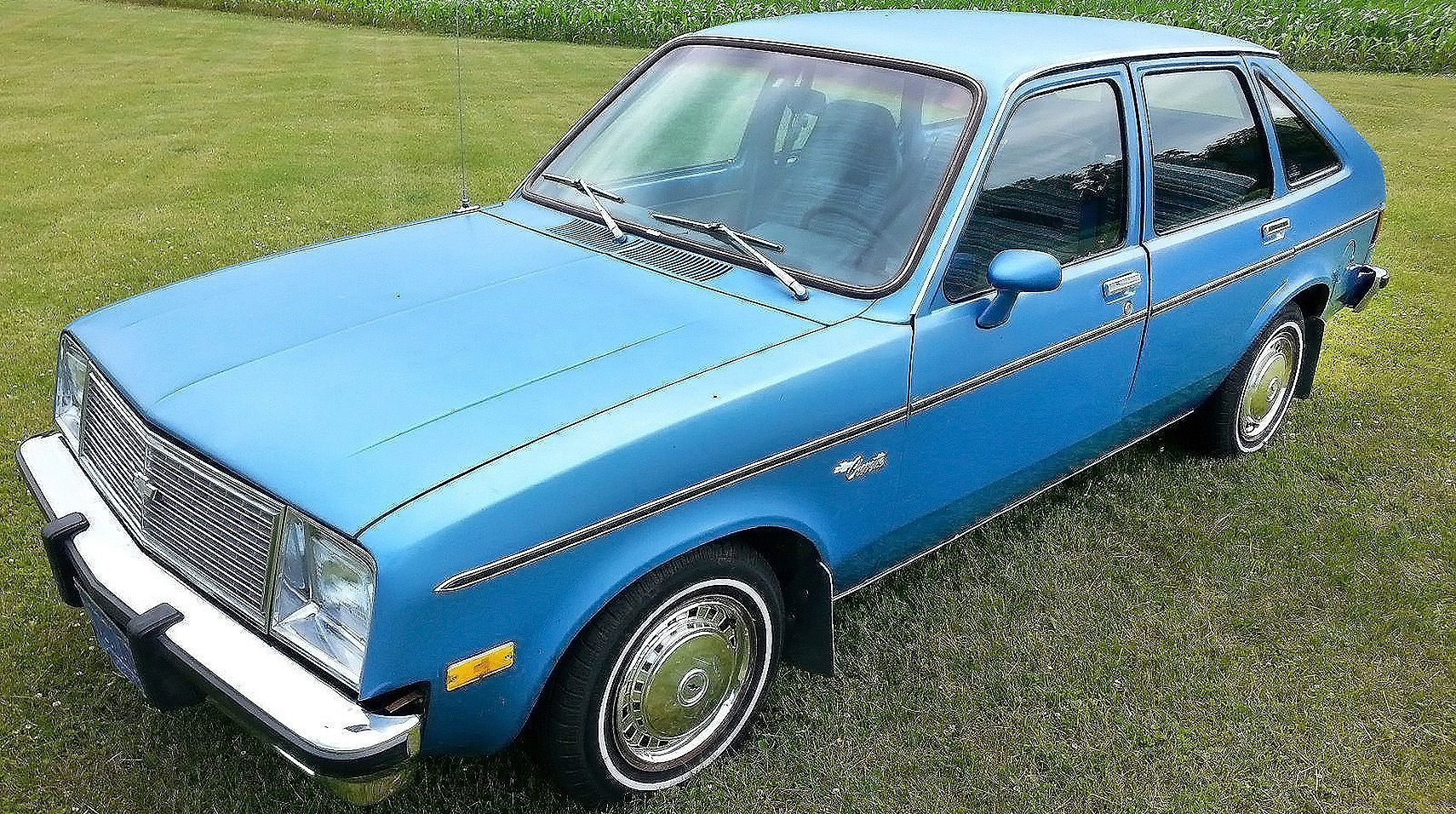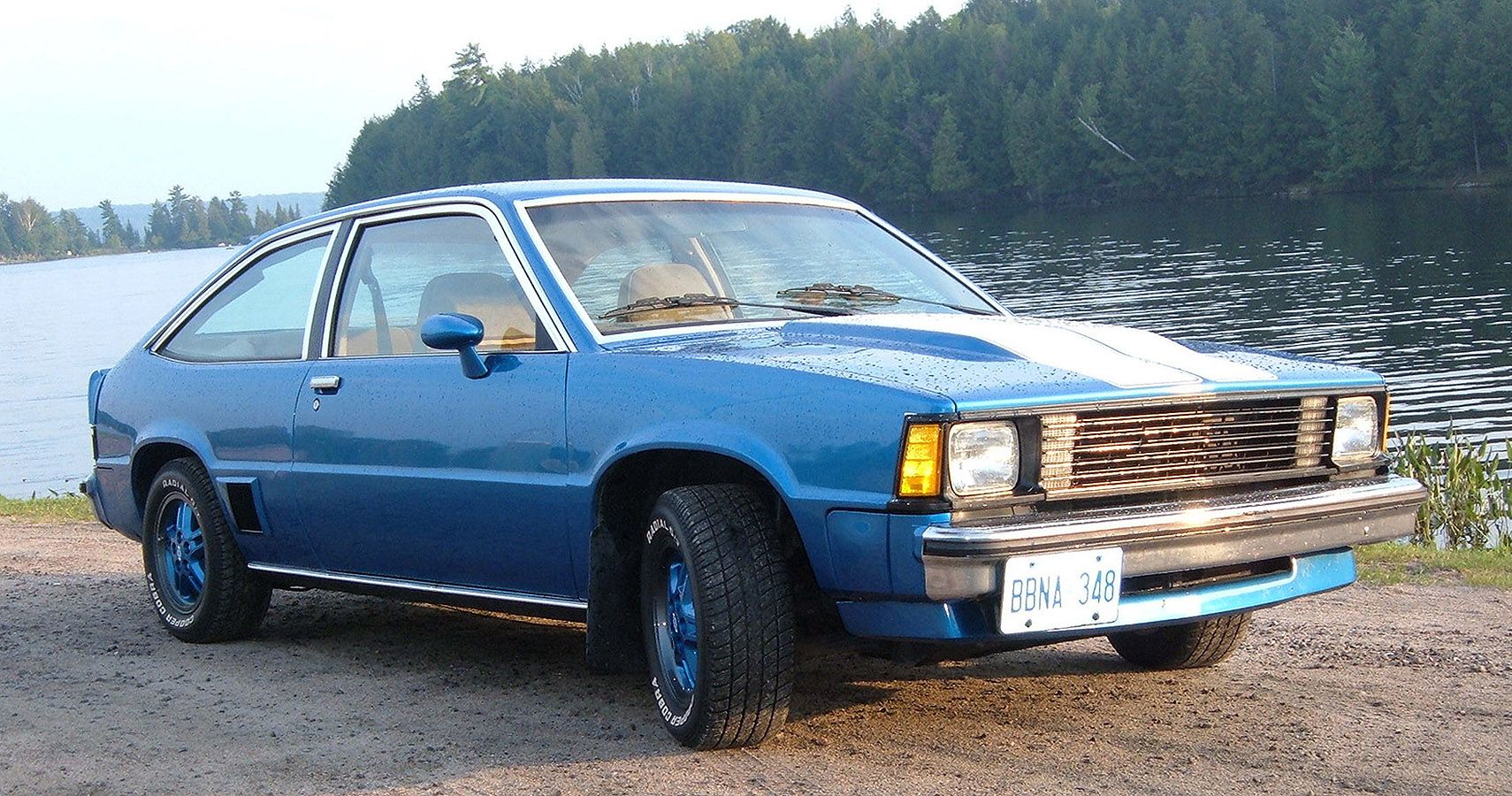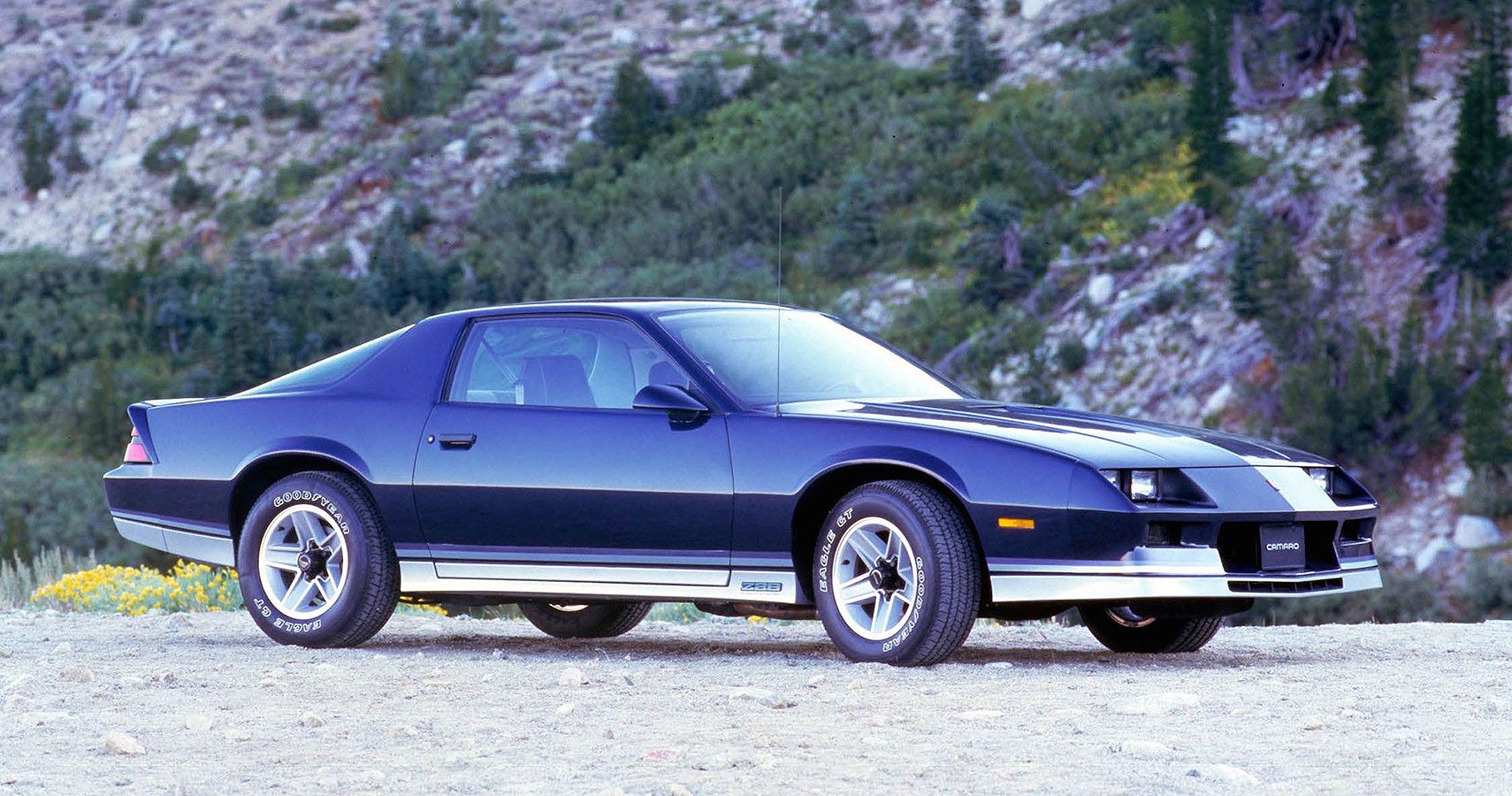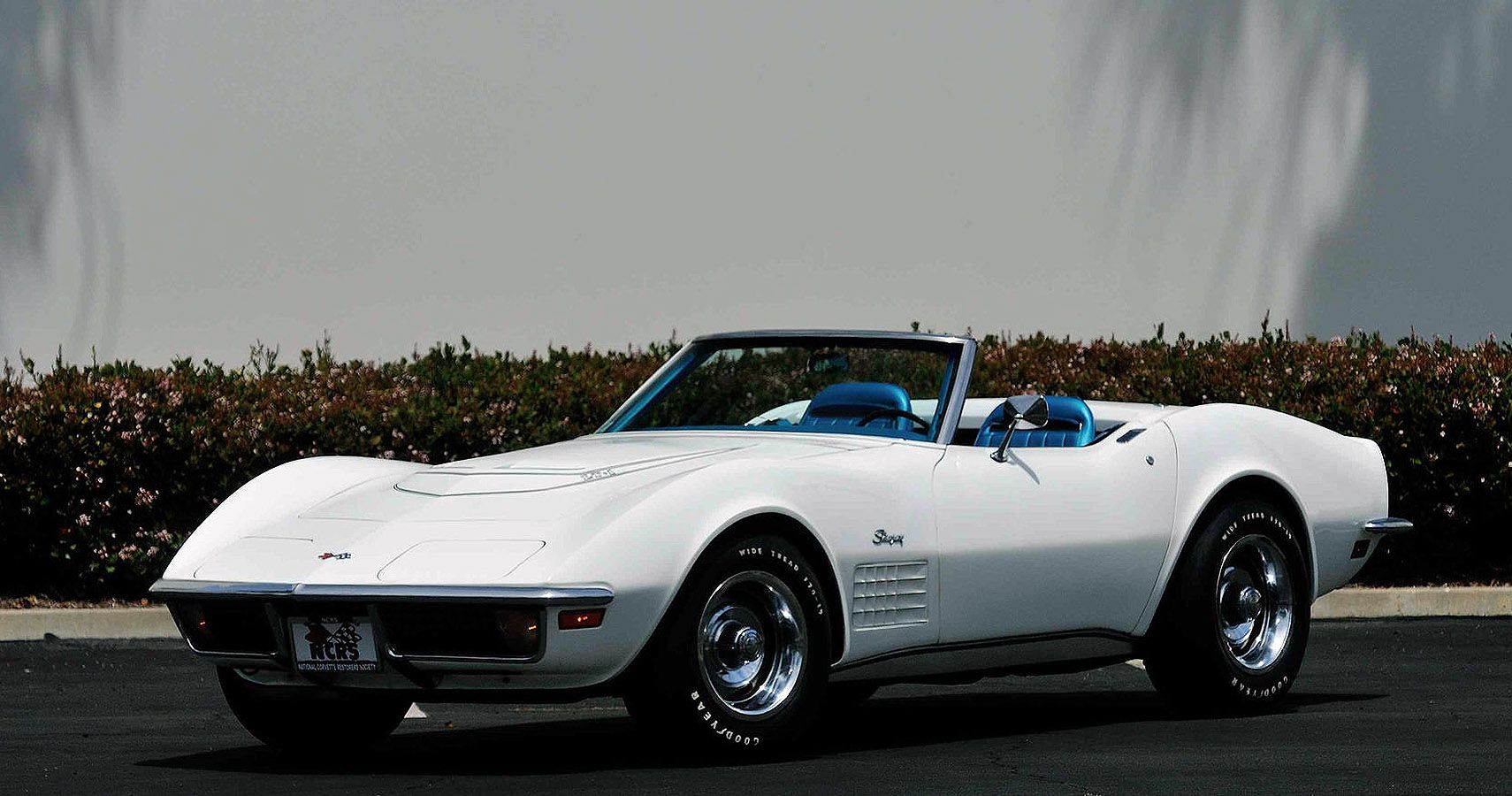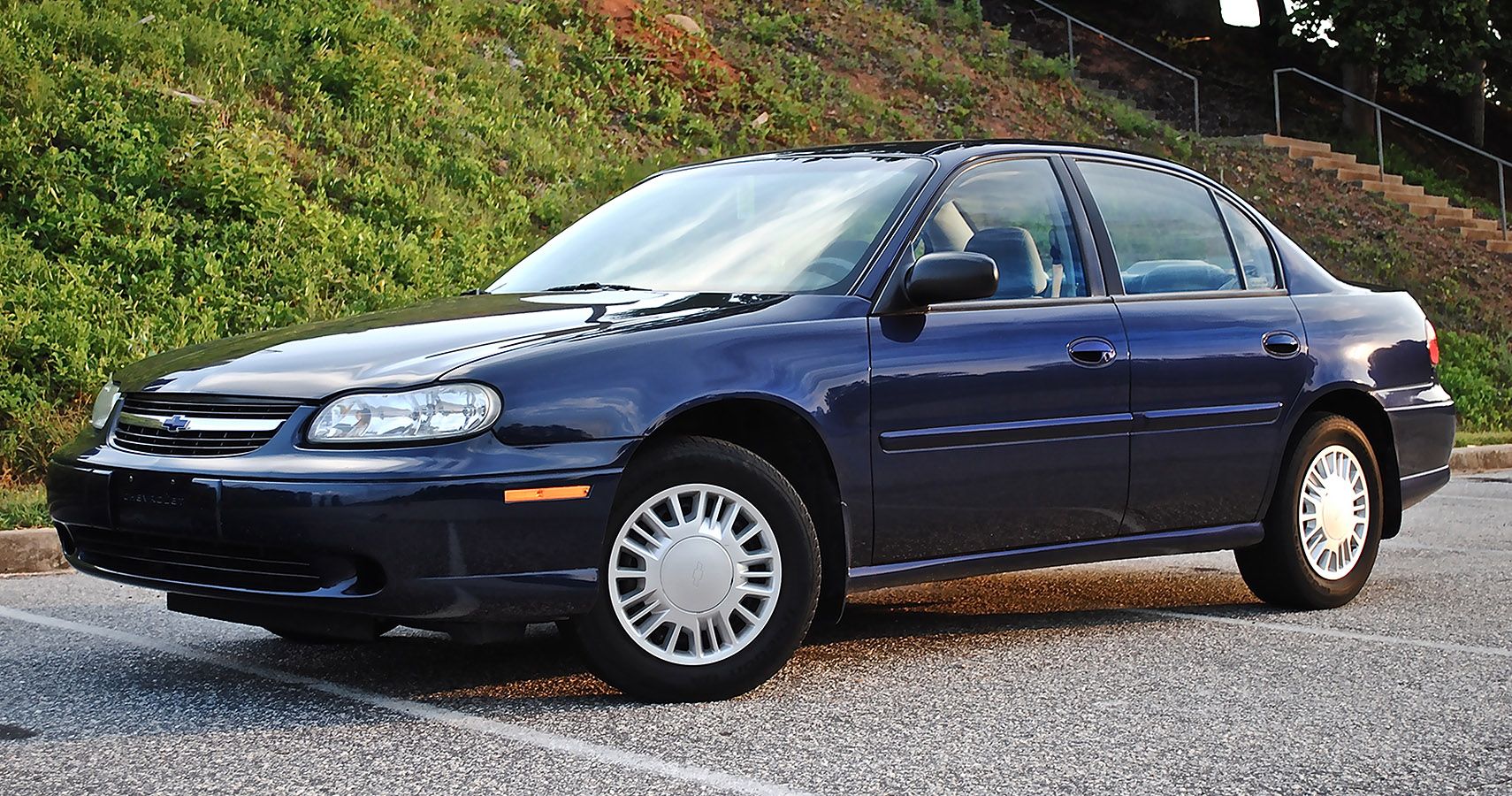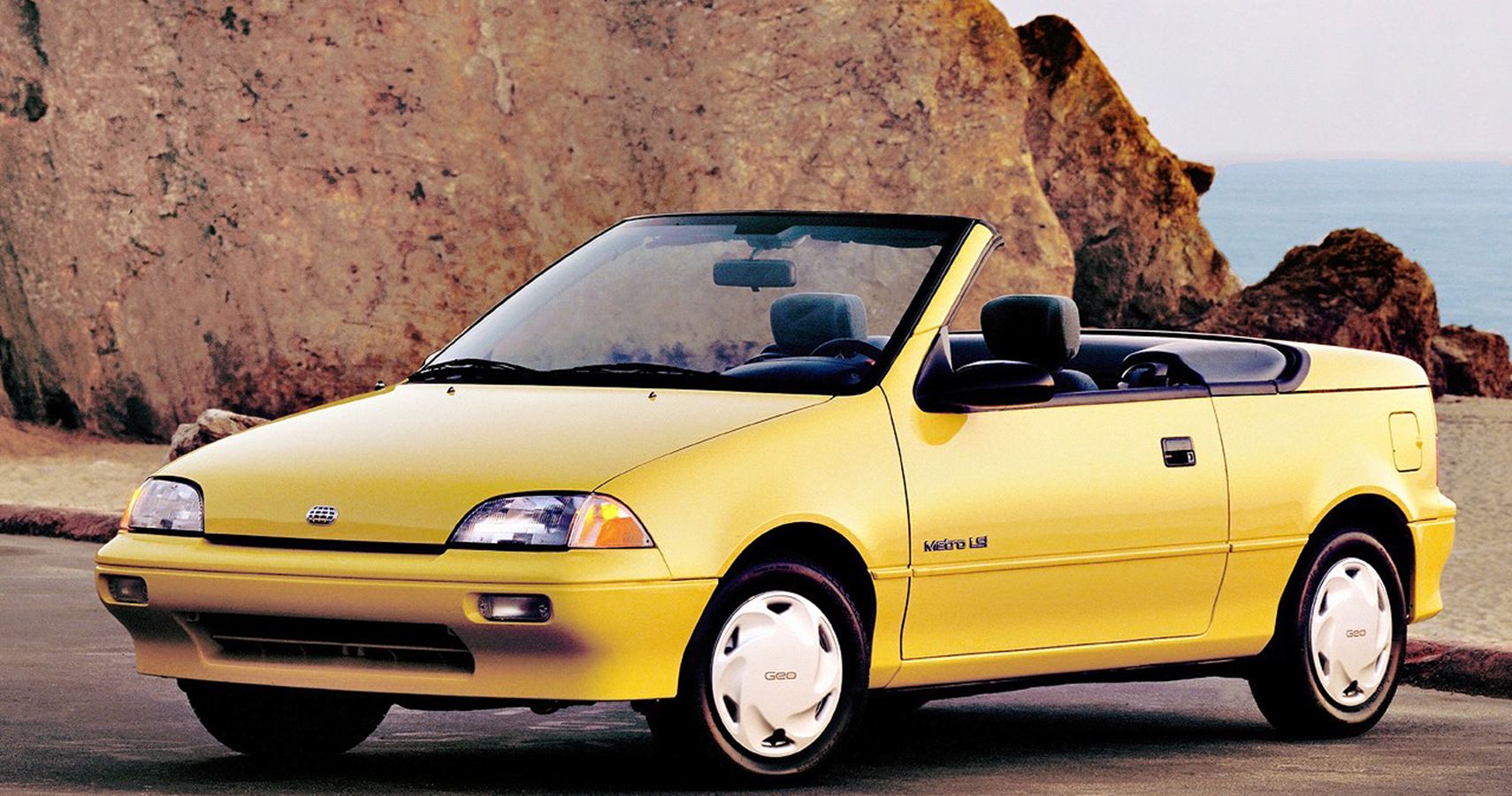Chevrolet is a trusted brand, a part of GM, one of America’s original Detroit Three biggies. And it has churned out good cars on a continuous basis since its inception in 1911, by ousted GM founder William Durant and of course, Louis Chevrolet. Mostly, Chevrolet or Chevy as its lovingly nicknamed makes very, very good cars. Think Bel Air, Camaro, Corvette, Suburban, Silverado, et al.
Sometimes though, when Chevy slips and makes a bad car, it isn’t just bad but absolutely horrid. Much like the recalls, it is facing over brake pumps, Chevy has had issues with its cars in the past. So here go ten times Chevy really let its customers down, by selling them lemons…
10 Chevrolet Lumina APV: The Dust Buster
Let’s begin with what was called the dustbuster minivan because it sort of resembled the vacuum cleaners of that time. Chevy’s Lumina APV, aka the All-Purpose Vehicle, looked like it had been put together in a hurry by someone who was vacuuming his place at the time.
It survived from 1990 to 1996 for a single generation only, and the 3.1-liter to 3.6-liter engines were too puny to give this heavy car even a semblance of power. The Pontiac Trans Sport was a far worthier and sportier rival and the Lumina proved to be contrary to its name, and a dark blot on the history of Chevy!
9 Chevrolet Corvair: Oversteering, Always
Okay, before you get up in arms over this choice – remember we are not talking about the latter Corvairs, but the 1960-64 early models which were launched by Chevy in a bid to take the edge off the Beetle’s ever-gaining popularity.
The problem with the Corvair was that swing-axle independent rear suspension that made it almost inevitable to oversteer it. The solution was to fill in differing air pressures for the front (a really low 15psi) and the rear (26psi) tires. In 1965, Chevrolet thankfully got some sense back, and the Corvair became the Corvair Corsa with all suspension issues finally fixed.
8 Chevrolet Vega: The Quintessential Rust Bucket
Unlike the Chevy Nova which was the poor man’s muscle car (read pony car); The Vega, despite its rather cool looks was an otherwise disaster. Seemingly put together by a bunch of meandering, dithering idiots – the Vega rattled even on smooth roads. The entire body was prone to rust.
It drank oil like a fish starved of water, and even then tended to overheat at the most inopportune moments. Despite some two million of this selling between 1971 and 1977; most of the customers bitterly regretted their buy and couldn’t wait to trade it in for something better. Just another Chevy car that Chevrolet let its customers down with.
7 Chevrolet Series D: The Worst V8 Ever
In 1917, Chevrolet introduced the Series D car, with its first-ever V8 engine. Sadly, this 4.7-liter overhead-valve V8 went down in the history of bad engines in the top ten list – and produced even less power than the Chevy V4, a very disappointing 36 horsepower. The D-Series Chevy did not sell well at all and has gone down in history as one really bad Chevy car.
RELATED: 10 Most Troublesome Engines, Ranked
By 1918, it was out. And Chevrolet became so wary of a V8 that it took them years to finally try it again in the form of Chevy’s small-block in 1955 – some 37 years after their initial massive failure. Of course, the 1923 Chevrolet Series C copper-cooled car was another disaster is making, before Chevy wisened up a bit.
6 Chevrolet Chevette
If the Vega wasn’t quite enough, Chevrolet followed up with a successor which was not only as bad but perhaps worse. The best thing about the Chevette was that it was cheap. And that’s about it. Everything else was just bad – with a starting horsepower at 52 that never went beyond an equally sad 74 – on engines that ranged from 1.4-liter inline-four petrol to 1.8-liter inline-four diesel ones.
The car was a rear-wheel-drive relic in the time of front-wheel-drive imports and sold only because it came cheap. Of course, it looked, sounded and ran cheap too. Then there was the Electrovette – an electric version of the Chevette launched in the 70s, that also failed to move the market.
5 Chevrolet Citation
The 1980 Chevy Citation has to be one of the most cited cars ever when it came to recalls. According to the National Highway Traffic Safety Administration (NHTSA), the Citation had nine recalls in toto, and this makes it the most recalled vehicle ever. It’s like Chevy made a car, but forgot all about its reliability or even sanity for that matter.
Bad fuel lines, faulty rear brakes, power steering, faulty transmission hoses – this car had every problem you could think of in its short five-year rebadged variant life. Despite its numerous faults, it didn’t even come cheap, which was the Chevette’s saving grace, and Citation's fall from grace.
4 The Chevrolet Camaro Sports Coupe
The 1982 third-generation Camaro Sports Coupe came fitted with the Iron Duke engine – a 2.5-liter LQ9 four-cylinder engine for its base version. And this heavy-duty sounding engine managed a horsepower of a very surprising, or rather disappointing 90 horses.
It went 0-60mph in 20 seconds, and was so different from what you’d expect a muscled Camaro to behave like that one had to get down from the car and look at the logo to make sure you were driving a Camaro, and not a Citation, or Vega! Of course, all the restyling made it look good, so at least it looked good parked in your driveway even if drove like a snail.
3 The Cat Corvettes
Corvettes should never have made this list – sadly, they did – and reason for that is two words, catalytic converters. So put in to make the Vette comply with ever-tightening emission standards, the cats took away power from the otherwise powerful Vettes, and turned them into simperingly sad versions of their former glory.
The three Vettes that many customers, unfortunately, ended up buying was the 1975 Vette, all of 165 horsepower. Then came the 1979 bestseller with a 5.7-liter V8 that only gave out 185 horses. And this continued to the 1980 Corvette 305 California model as well, with all of 180 horses running the road.
2 The Chevrolet Malibu
The Malibu has been a longstanding nameplate of Chevy, and most models are okay. The ones we consider weak and inept, are the fourth generation 1997-2003 ones, which were produced at a time when Chevy seemed to concentrate all its big brains into making bigger and better SUVs and trucks.
The Malibu, a family sedan, was sadly ignored for these years, was boring and seemingly put together without an actual effort. The 2.4-liter 150-horsepower inline-four sounded good on paper but gave the Malibu no pep or punch. The interiors and exteriors were drab – almost as if the car wanted to belong so badly to the family of sedans, it lost any individuality of its own.
1 The Geo/Chevy Metro
Sometime in the 80s, Chevy opened another subdivision of small economy cars, Geo, and from it was born the Geo Metro, a rebadged variant of the Suzuki Swift (Cultus). Of course, some loved this nifty-looking car that came in a convertible variant as well. And it did give good fuel economy.
The problem with the Geo Metro was that it was too small and a weak a car to be effectively driven on highways – think of its 55 horsepower three-cylinder engine, that reminds us of the golf carts of today. Only the driver side had an airbag, and the NHTSA was probably too generous with three out of five safety rating, especially since it came in a ragtop also.

